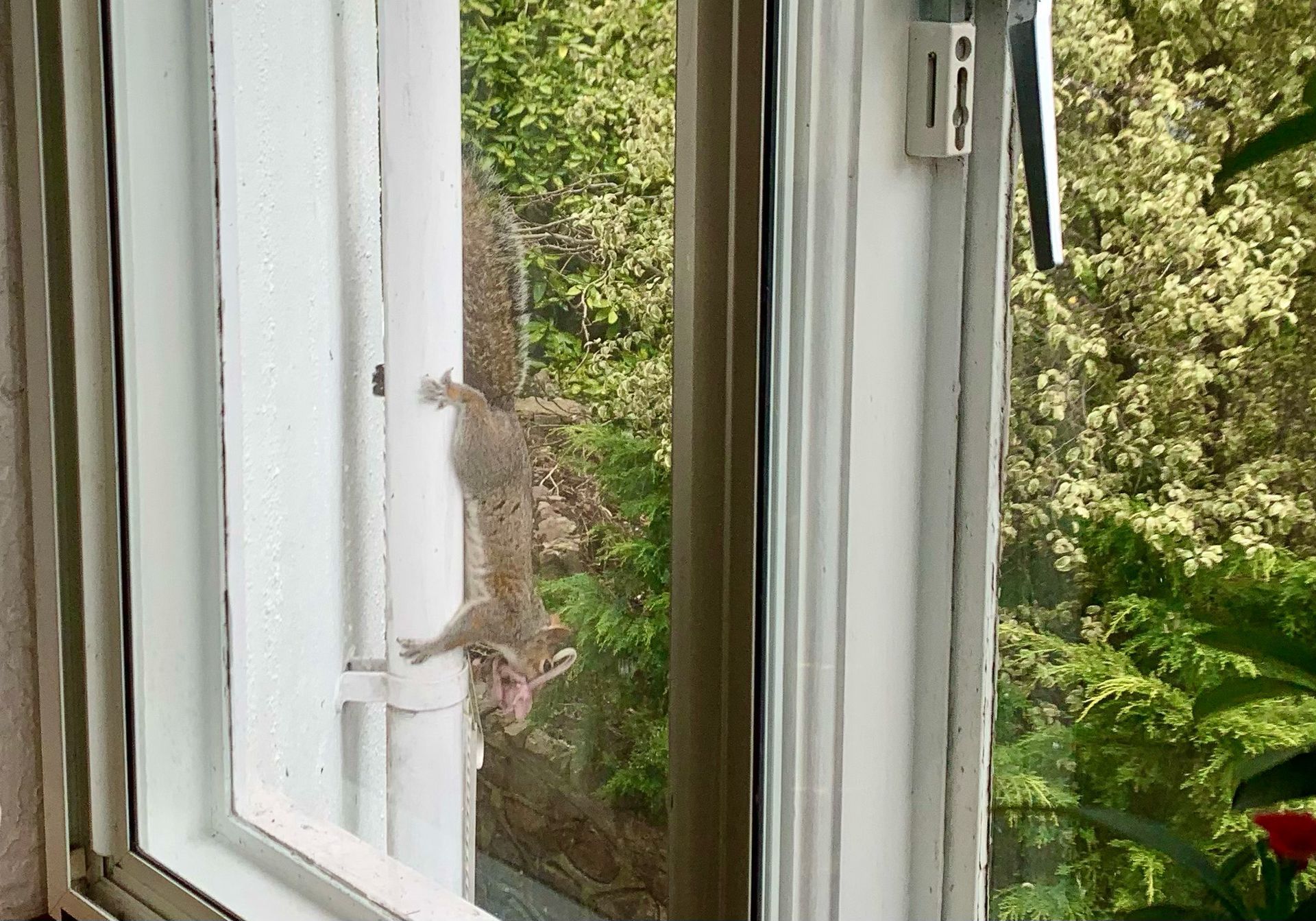When Do Baby Squirrels Leave The Nest
When Do Baby Squirrels Leave The Nest
Disturbed grey squirrels leave the drey with kittens

Grey Squirrel Control - Case Study
I was recently called to a property in Bristol where the customer's ceiling had almost fallen through due to a build-up of water above it.
After further investigation it was clear that this was down to squirrels. Our Bristol squirrel control services quickly swung into action to help the customer avoid further damage.
The squirrels had filled an internal water gully with loft insulation, causing the gully to block, overflow and saturate the ceiling below.
With no safe access into the space where the squirrels were nesting and the urgency of the issue, it was decided to make an inspection point into the ceiling through which we could place control measures.
After the disturbance of cutting the hole in the ceiling, constant banging on the ceiling with a broom handle and placing control measures it seemed these squirrels decided to move home and left with their kittens to go to pastures new.
Squirrels are rarely this accommodating and lethal control is sometimes required. Fortunately, on this occasion, I was able to avoid lethal options.
Book Your Pest Inspection
Practical Facts About Grey Squirrels In Bristol
Grey squirrels (Sciurus carolinensis) are a common nuisance pest in the attics and crawl spaces of customers homes in Bristol and we are routinely being asked to remove this invasive species using the most humane wildlife control methods available.
These methods include lethal control (shooting, trapping and poisoning), disturbance (ultrasonic repellers, strong odours and strobe lights, etc.) and exclusion which is the most desirable and humane form of control.
When Do grey Squirrels Have Babies In Bristol?
Grey squirrels in the UK breed between February and May, but this all depends on the temperature, weather conditions, food availability and the fitness of the animals themselves. Squirrel babies or young are called kits, kittens, puppies and pups!
In the Autumn the squirrels may breed again, but we have found that squirrels will nest at almost any time of year where they have the safety and warmth of a well-insulated loft space and gardens rich in bird feeders and other sources of nutrition.
How Many Babies Do Grey Squirrels Have?
Squirrels can have between one and eight young per litter, however the most common litter size is between 2 and 4 kittens.
When Do Baby Squirrels Leave The Nest?
Grey squirrel babies or young will remain with their mothers in the nest for around 6-8 weeks before starting to explore the world beyond. After 8 weeks the juvenile squirrels will begin to build confidence and by 12 weeks most of the squirrels will have left to develop territories of their own.
Prevent Squirrels Getting Back Into Your House
Here Are Six Ways To Discourage and stop Squirrels from Entering Your Home
1. Seal all entry points: Identify and seal any openings or gaps in your home's exterior that squirrels can use to gain entry. This includes gaps in the roof, vents, chimney openings, and damaged or loose siding.
2. Install mesh screens or barriers: Cover any openings, such as vents or chimneys, with sturdy mesh screens that have small enough gaps to prevent squirrels from squeezing through.
3. Trim overhanging tree branches and control or remove climbing plants: Trim tree branches that are close to your home, as squirrels can use them as pathways to access your roof or attic. Aim for a minimum distance of 6-8 feet between trees and your house.
4. Secure waste bins and recycling receptacles: Make sure your rubbish bins have tight-fitting lids to prevent squirrels from being attracted to them and potentially accessing your home in search of food.
5. Remove deliberate food sources: Keep bird feeders away from your house, as spilt seeds and nuts will attract squirrels. Additionally, avoid leaving pet food or other sources of food outside that might entice them.
6. Consider using deterrents: Squirrel deterrents such as ultrasonic devices or motion-activated sprinklers may discourage them from approaching your home but may also discourage other wildlife.